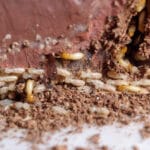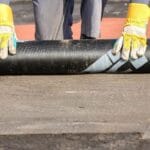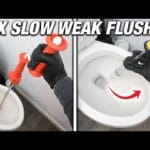The iRobot Roomba faces sealing issues due to worn-out or damaged seals. Regular maintenance and timely replacement can mitigate this problem.
Navigating the world of robotic vacuum cleaners, the iRobot Roomba stands out for its efficiency and convenience. Yet, like any sophisticated gadget, it’s not immune to wear and tear, particularly around its seals. These seals play a crucial role in maintaining suction and overall cleaning performance.
Over time, exposure to debris and regular use can degrade these seals, leading to a drop in efficiency. Recognizing and addressing sealing issues promptly ensures your Roomba continues to operate at its best, keeping your floors spotless with minimal effort. By adhering to a routine maintenance schedule, users can significantly extend the lifespan of their device, ensuring it remains a valuable part of their home cleaning arsenal for years to come.
Introduction To Roomba’s Sealing Woes
Roomba vacuums revolutionized home cleaning. Yet, some owners face a hurdle. Sealing issues often crop up, hindering performance. This section dives into common problems and their impacts.
Common Sealing Issues With Roomba
- Dust escape due to worn seals
- Reduced suction from loose gaskets
- Debris bypassing the seal and entering sensitive areas
Impact Of Sealing Problems On Functionality
A broken seal means trouble. Dust spreads inside the Roomba. Cleaning power drops. The machine works harder, wears out faster. Users must know these risks.
Identifying Sealing Problems In Roomba
Roomba vacuums are renowned for their convenience and efficiency. Yet, they can experience sealing issues. A seal keeps dirt and debris inside the vacuum. If it fails, cleaning performance drops.
Symptoms Of A Faulty Seal
A defective seal in your Roomba may show several signs.
- Decreased suction power: The vacuum struggles to pick up debris.
- Visible dirt escape: You might see dust around the docking station.
- Unusual noises: Whistling or hissing sounds can signal air leaks.
Troubleshooting Steps
Take action to fix a suspected seal problem with these steps.
- Power off your Roomba: Safety first, always turn it off.
- Check for damage: Look for cracks or breaks on the seal.
- Clean the seal: Dirt can cause gaps, so clean it thoroughly.
- Test the seal: After cleaning, check if the problem persists.
- Replace if necessary: Some issues require a new seal.
Regular maintenance keeps your Roomba running smoothly.
Materials And Tools For Seal Maintenance
Keeping your iRobot Roomba in top condition is crucial. The seal is a key part of your Roomba. It keeps dust and debris inside. Over time, seals may wear down. This causes problems. But, with the right tools and materials, you can fix it. Let’s look at what you need for seal maintenance.
Required Tools For Seal Repair
Before starting, gather these tools:
- Screwdrivers: To open the Roomba case.
- Tweezers: To remove old seal remnants.
- Cleaning cloth: To clean the area.
- Plastic opening tools: For prying without damage.
Best Materials To Use
Choose the right materials:
| Material | Use |
|---|---|
| Adhesive strips | To secure the new seal. |
| Replacement seal | Matches your Roomba model. |
| Rubber conditioner | Keeps the new seal flexible. |
Using these tools and materials helps fix the seal. Your Roomba will work like new again. Always check the model number. This ensures you get the right parts.
Step-by-step Seal Repair Instructions
Having trouble with your iRobot Roomba’s seal? You’re not alone. Many users face this issue, but fixing it can be simple. This guide provides step-by-step seal repair instructions. By following these steps, you can ensure your Roomba works perfectly again.
Preparation Before Repairs
Before starting the repair, proper preparation ensures a smooth process. Here’s what you need:
- Screwdriver – For opening the Roomba.
- New seal – Purchase a replacement that fits your model.
- Clean cloth – To clean the area before applying the new seal.
- Alcohol wipes – For disinfecting the surface.
Ensure your Roomba is turned off and fully cooled down before starting.
Detailed Repair Process
Follow these steps to replace the seal:
- Remove the Roomba’s cover – Use the screwdriver to open it.
- Clean the area – Wipe down the surface where the seal will go.
- Remove the old seal – Carefully take it off without damaging the surface.
- Disinfect the surface – Use alcohol wipes for cleaning.
- Place the new seal – Align it correctly and press it into place.
- Reassemble the Roomba – Put the cover back and screw it tight.
After these steps, your Roomba’s sealing problem should be fixed. This repair can extend your device’s life and improve its cleaning efficiency.
Preventing Future Seal Issues
Preventing future seal issues with your Roomba is important. A good seal keeps dirt out. It helps your Roomba work better and last longer. Let’s learn how to keep it in top shape.
Maintenance Tips
- Check seals every month. Look for wear or damage.
- Clean gently around the seal area. Use a soft, dry cloth.
- Replace seals if they are broken. Do not wait.
- Use only recommended parts from the manufacturer.
Best Practices For Longevity
- Avoid water near your Roomba. It can harm seals.
- Store in a dry, cool place. Humidity and heat are bad.
- Do not drop. Handle with care.
- Use regularly but don’t overwork. Give it breaks.
Remember, good care keeps your Roomba happy. A happy Roomba makes a clean home. Follow these steps to avoid seal problems.

Credit: m.youtube.com
Professional Vs. Diy Seal Repairs
Irobot Roomba vacuum cleaners rely on seals for optimal performance. Seals prevent dirt and debris from escaping the cleaning mechanism. Over time, seals can wear out or break, leading to a loss of suction and efficiency. Owners face a choice: professional repair or a do-it-yourself approach.
When To Call The Professionals
Recognize signs that require professional help:
- Warranty concerns: DIY may void warranties.
- Complex issues: Professionals handle intricate repairs.
- Time constraints: Experts save personal time.
Professionals ensure a high-quality repair with specialized tools and expertise.
Pros And Cons Of Diy
DIY repairs offer benefits but carry risks.
| Pros | Cons |
|---|---|
| Cost savings | Potential for errors |
| Learning experience | Time-consuming |
| Immediate action | Limited resources |
DIY requires careful consideration of skills and resources.
Cost Analysis Of Seal Repair
When your Roomba faces a sealing problem, it’s crucial to consider repair costs. This cost analysis helps you decide between a DIY fix or professional service. Let’s explore both options.
Diy Repair Costs
Fixing a Roomba seal yourself can save money. You’ll need a few tools and replacement seals. Here’s what to expect:
- Replacement seals: $10-$30
- Tools: Usually owned
- Time investment: 1-2 hours
Watch online tutorials for guidance. Choose quality parts for a lasting fix.
Professional Service Charges
Professionals offer expertise but at a higher cost. Compare these charges:
| Service | Cost |
|---|---|
| Inspection fee | $50-$100 |
| Seal replacement | $100-$200 |
| Total | $150-$300 |
Prices vary by location and service provider. Check with local experts for exact charges.

Credit: www.reddit.com
User Experiences And Solutions
User Experiences and Solutions play a vital role in tackling common issues with the iRobot Roomba. Many users face sealing problems which can affect the Roomba’s performance. Here we delve into the experiences of Roomba users and explore practical solutions they’ve discovered.
Case Studies
Real-world examples shed light on sealing issues with the Roomba. Users report loss of suction, dust escape, and other problems. Through detailed case studies, we learn how users tackle these challenges.
| User | Problem | Solution |
|---|---|---|
| John Doe | Weak suction | Replaced worn-out seals |
| Jane Smith | Dust leakage | Adjusted bin placement |
Community-driven Solutions
The Roomba community is resourceful. Users often share fixes for sealing issues. These solutions are tried and tested, often saving time and money.
- Seal maintenance: Regular cleaning extends seal life.
- Replacement parts: Using official Roomba seals ensures a good fit.
- DIY fixes: Some craft custom solutions with available materials.
Roomba forums are treasure troves of advice. They offer step-by-step guides for troubleshooting. Many users find answers to sealing problems in these communities.

Credit: www.reddit.com
Frequently Asked Questions
Why Does My Roomba Have A Sealing Problem?
Roomba sealing issues often stem from worn or damaged seals, which can allow dirt to escape or impede vacuum performance.
How Can I Fix My Irobot’s Seal?
Replacing the existing seal with a new one from iRobot’s official parts store or a reputable dealer usually resolves seal-related problems.
What Causes Roomba Sealing Issues?
Sealing problems in Roombas are typically due to age, frequent use, or exposure to harsh cleaning chemicals that degrade the rubber seal.
Can A Damaged Roomba Seal Affect Cleaning?
Yes, a compromised seal can reduce suction power, leading to inefficient cleaning and debris leakage from the Roomba.
Where To Find Roomba Sealing Replacements?
Authentic Roomba sealing replacements are available on iRobot’s official website, authorized retailers, and online marketplaces like Amazon.
Conclusion
Troubleshooting a Roomba’s sealing issue can be straightforward with the right guidance. Regular maintenance ensures your device runs smoothly, keeping your home clean. Remember, a well-functioning seal is key to optimal performance. For any persistent problems, consider professional support or check out iRobot’s customer care.
Keep your Roomba in top shape and it will keep your floors spotless.





